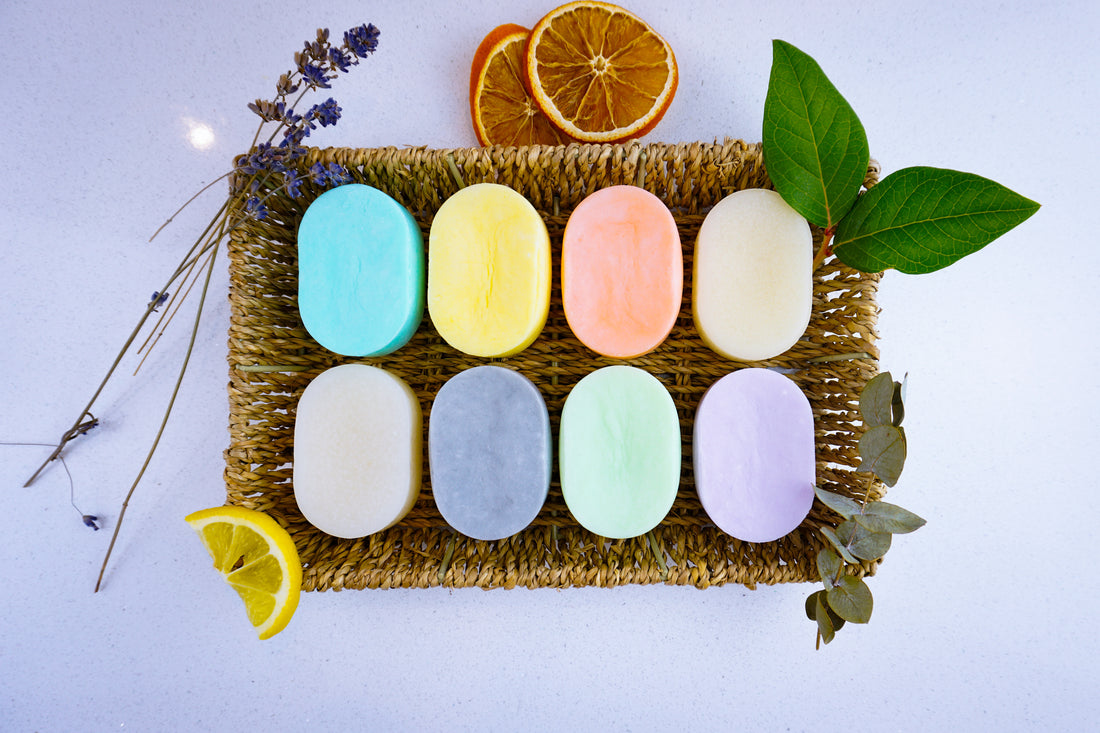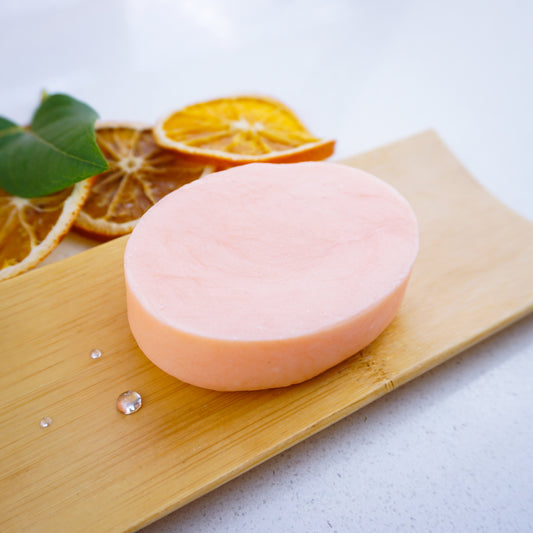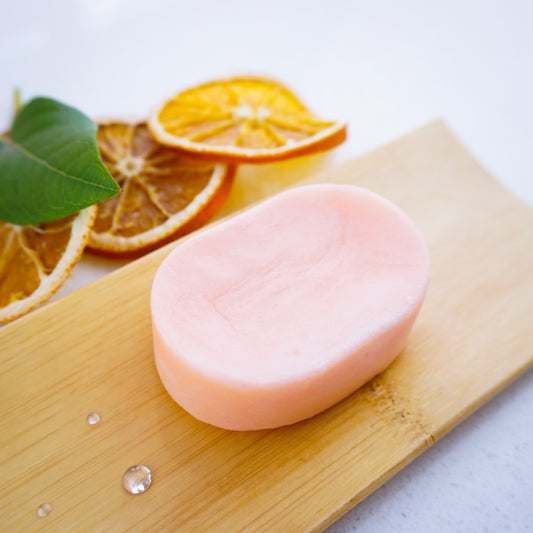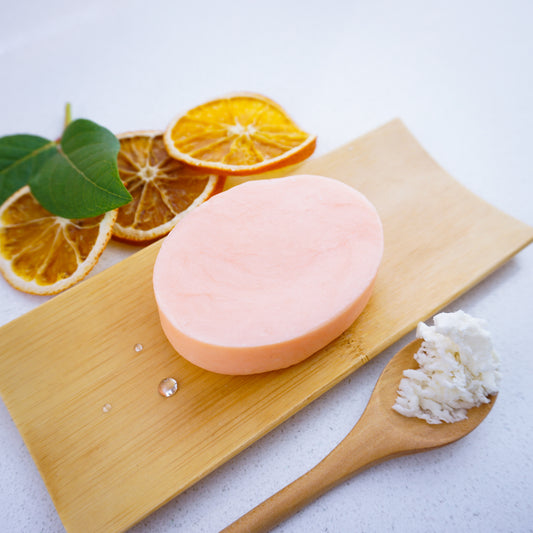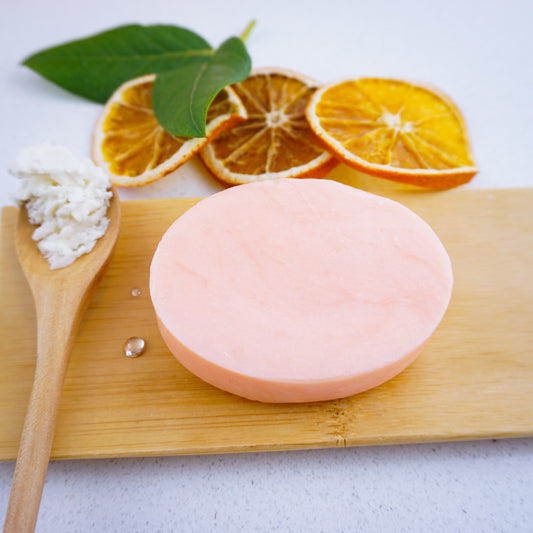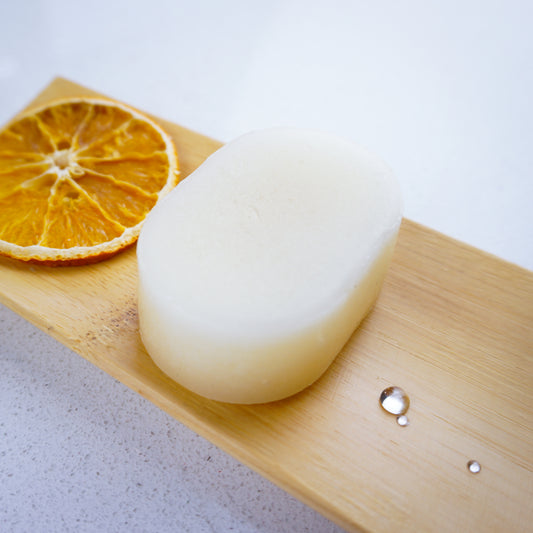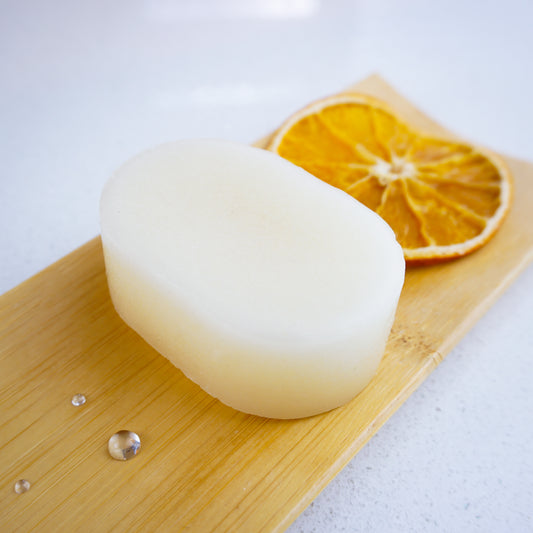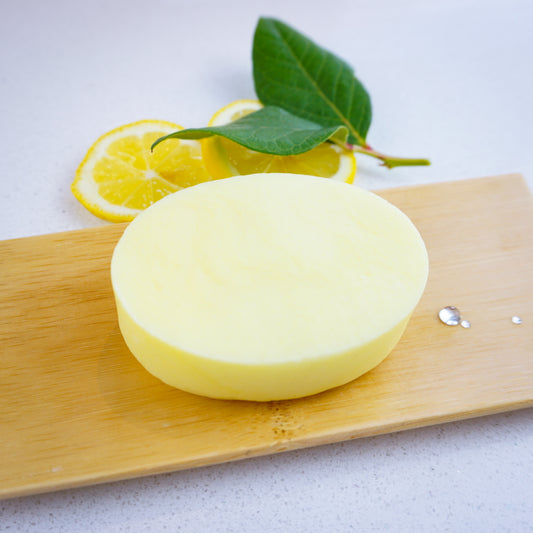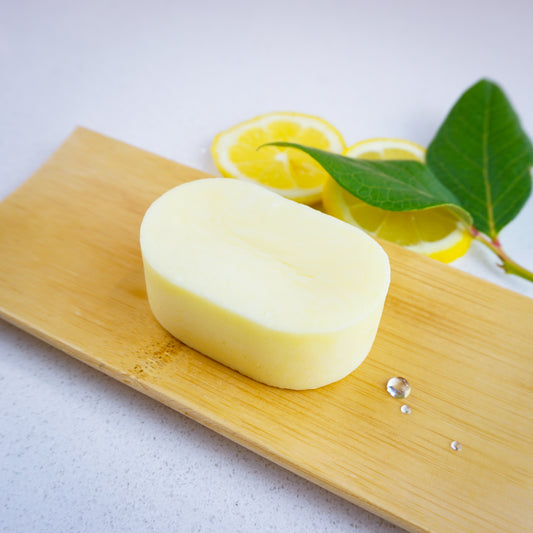Have you ever thought about how to make shampoo bars? In this article, I'll take you through the fascinating process of making your very own shampoo bars from scratch. You'll discover that it's not only a rewarding and sustainable way to care for your hair but also an opportunity to tailor your shampoo to your unique needs and preferences.
Sections:
- What is a shampoo bar
- Can I make my own shampoo bar
- Shampoo bar recipes
- Tailoring my shampoo bar to my hair type
- Instructions to make shampoo bars
- Where to find shampoo bars
What is a shampoo bar?
Shampoo bars have gained popularity as a sustainable and eco-friendly alternative to traditional liquid shampoos. They are better for the environment and your hair, as they often contain natural, nourishing ingredients. We are going to explore what shampoo bars are, whether you can make your own, the essential ingredients, tailoring your bar to your hair type, step-by-step instructions for crafting your custom shampoo bar, proper usage and storage, and where to find pre-made shampoo bars.
Shampoo bars are solid bars without the additional water you typically find in bottled liquid shampoo. As these bars are concentrated, you will benefit directly from all the natural ingredients within your bar to your hair and scalp. Additionally, shampoo bars are waterless, and this characteristic not only benefits your hair but also contributes to water conservation, which is an ever-growing concern, especially in less developed countries.
Reducing our dependency on single-use plastic is incredibly important to both our current and future state of the planet. A single shampoo bar will typically last around 50 washes, equivalent to 2 plastic bottles.
Shampoo bars are great for your hair, incredibly eco-friendly and will save you money in the long run.
How do you find yourself a shampoo bar? You can either purchase or make your own shampoo bars.
Can I make my own shampoo bar?
Yes, you can make your own shampoo bar!
Creating your very own shampoo bar is an absolute blast! Once you've navigated the labyrinth of fancy ingredient names and understood how each plays a role in your shampoo, you can tailor and custom your own specific shampoo bar for your hair and scalp type.
I have to point out that making your own shampoo bars can be a bit more challenging than making soap bars. The main reason is that you'll have to purchase specific ingredients, unlike soap bars, where you can create them using ingredients that are already present at home.
Maintaining the pH balance of your hair and scalp is crucial when making shampoo bars at home. The natural pH balance of our hair and scalp is 5.5, which is slightly acidic. By ensuring that the pH level of your shampoo bars is close to this natural balance, you can avoid disrupting the delicate balance of your hair and scalp. It's essential to avoid using soap bars as shampoo because they are high in alkali and can irritate your scalp and hair.

Shampoo bar recipes
Firstly, you will need to understand the type of hair & scalp you have. Most people will generally fall into the following categories: Dry, Oily, Curly, Itchy, Sensitive and Normal. You will add or remove certain ingredients depending on your type.
Think of it like baking a cake, the foundational elements are akin to flour, eggs, milk, and butter that form the sponge. Similarly, a shampoo bar's foundation lies in cleansing, with surfactants and fats as the key players.
The cleansing ingredients (Surfactants)
Surfactants, short for "surface-active agents," are special molecules that love both water and oil. They act as bridge builders, allowing water and oil to mix. In shampoo bars, they help remove dirt and oil from your hair by creating a nice, bubbly lather, making sure your hair is cleansed.
We use the following ingredients as the foundation of our shampoo bars. These ingredients cleanse away dirt, grease and any unwanted particles from your hair and scalp.
Solid surfactants
SCI (Sodium cocoyl isethionate) - is a gentle foaming cleansing ingredient which is derived from coconuts. SCI is also known as Baby Foam and can be commonly found in baby products. It's a great gentle cleanser that laters amazingly well in both hard and soft water. You can purchase SCI either in a powder form or in flakes. I recommend buying it in powder form, as mixing it with the other ingredients is much easier.
SLSa (Sodium Lauryl Sulfoacetate) - not to be confused with SLS. This great gentle cleanser gives out loads of lather and foam. It is normally derived from coconuts and/or palm oil, so make sure, when looking for this, that it comes from sustainable sources.
Now that we have solid surfactants, we need to add a little liquid surfactant to blend everything together.
Liquid surfactants
Coco glucoside - is a gentle foaming surfactant. It provides a gentle cleanse and a great combination with our above solid surfactants.
Cocamidopropyl betaine - another liquid surfactant that is naturally derived from coconuts. Cocamidopropyl betaine pairs really well with Coco glucoside, as they work together to create a rich and cleansing foam.
Conditioning and Moisturising.
Now that we have covered the ingredients to cleanse your hair, these surfactants actually do a too good of a job; although effective in removing dirt, grime, and unwanted oils, they can also strip away some of the natural oils present in your hair and scalp.
We need to add some conditioning and hydration back into the hair.
You can't go wrong with a good conditioning agent like BTMS and Cetyl Alcohol; they're like the icing on the cake, leaving your hair soft and tangle-free.
Vitamin Pro-B5, or Panthenol, is a hydrating ingredient in shampoo bars. It helps keep your hair strong, prevents breakage, and adds a natural shine. It's also great for your skin, making it soft and smooth. You will commonly find Vitamin Pro-B5 in many other cosmetic and skin care products.
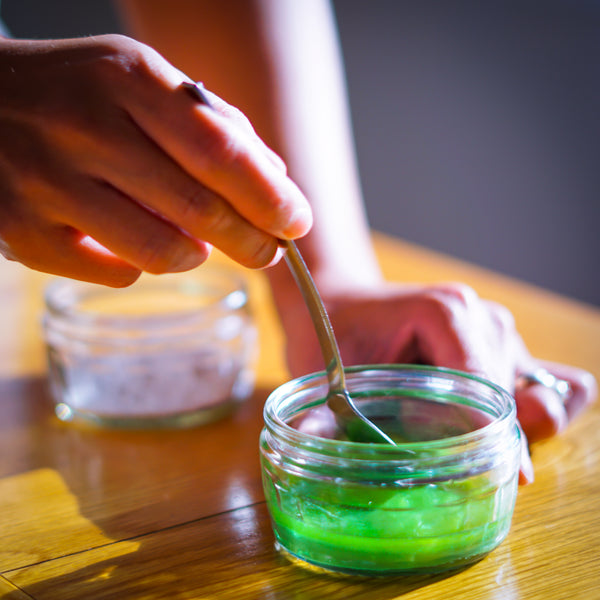
Adding a little protein to your shampoo is recommended. Protein strengthens and prevents damage, making your hair healthier and less prone to breakage. We use hydrolysed wheat protein, but other proteins like rice and silk protein will equally do the same job.
Finally, feel free to personalise your shampoo recipe with your preferred oils, like coconut oil or shea butter. This will enhance hair conditioning and provide longer-lasting moisture. Just remember not to overdo it.
Tailoring my shampoo bar to my hair type
If your hair and scalp tend to be on the drier side, consider adding a bit more of the conditioning ingredients, but don't overdo it. Using too much conditioner can make your hair feel heavy and become excessively greasy.
Fragrances
Scent your shampoo bar with your preferred essential oils. We avoid using chemically produced perfumes, which can often lead to skin irritation.
Check our article on the essential oils we use in our shampoo bars. It's informative because each essential oil uniquely benefits your hair and scalp. You can also select your favourite aromatic essential oil too.
Our best selling are the citrus shampoo bars. Both the Sweet orange Shampoo bar and Lemon Shampoo bar. You can easily find both essential oils to use in your shampoo bar recipe.
Preservatives
It's important to note that when any product comes into contact with water, there's a risk of rapid bacterial and mould growth. Some of these bacteria can be harmful. To safeguard your well-being, we must incorporate a small amount of preservatives to prevent this.
If you are dead set on not using any preservatives, please do so at your own risk.
We use a preservative called Phenoxyethanol. It is a safe and effective preservative used in many products to prevent the growth of harmful bacteria and moulds. It helps keep your bars fresh and free from contamination.
Instructions to make shampoo bars
You want to use a ratio of 70/30 of dry to liquid ingredients. The more dry ingredients you incorporate into your formula will create a harder solid shampoo bar and vice-versa.
For your first homemade shampoo bar, try this basic shampoo bar recipe:
- 45g SCI
- 20g SLSa
- 18g Coco glucoside
- 8g Cocamidopropyl betaine
- 2g oil of your choice
- 2g BTMS
- 1g Vitamin pro-B5
- 0.5g Presavative
- 1g Essential Oil
Using a double boiler, gently heat and melt the BTMS until it becomes a clear liquid. Next, add the four surfactants and stir thoroughly. Take it off the heat and allow it to cool slightly. Then, add the remaining ingredients and mix them in, even though the mixture might be a bit challenging to blend at first.
Now, transfer the mixture and begin shaping it into your preferred mold. Use the back of a clean spoon to level the bar inside the mold.
Leave the mixture in the mold for a few hours, then carefully remove your newly created shampoo bar. Allow it to rest overnight.
There you have it! How to make your own shampoo bar.
Where to find shampoo bars
At Washla, we've spent years perfecting our shampoo bar formula using the core ingredients mentioned above. We understand that gathering these ingredients and crafting shampoo bars yourself may seem challenging, but the effort is truly rewarding. However, if you prefer, you can always visit us to purchase our ready-made shampoo bars.
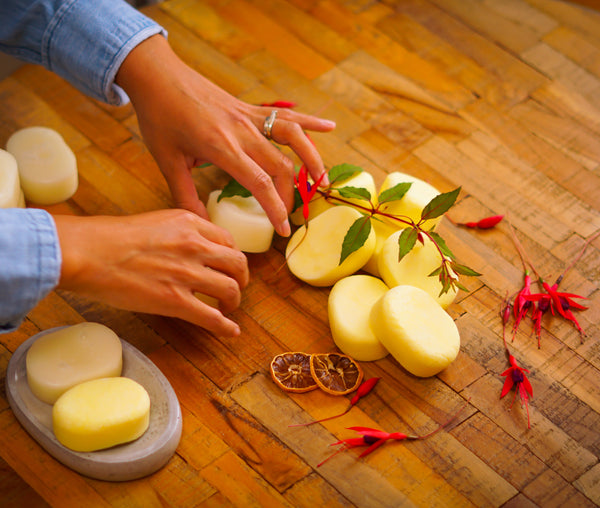
We hope you'll enjoy the process of making your own shampoo bars—it's both fun and incredibly fulfilling.
Follow us on @washla.uk for sneaky peeks behind the scenes short videos on how we make our shampoo bars. If it's something that is too time consuming and not really your thing. Don't worry - Washla Shampoo and Conditioners bars are always here! I am sure we have the perfect product for you. Check out our website www.washla.uk for all our recommendations. Or don't hesitate to reach out to me elaine@washla.uk
I hope you find this article on how to make shampoo bars useful, please feel free to comment and let us know how you got on with the shampoo bar recipe.

